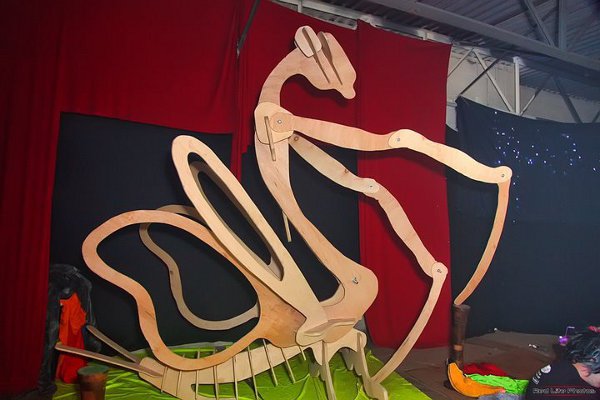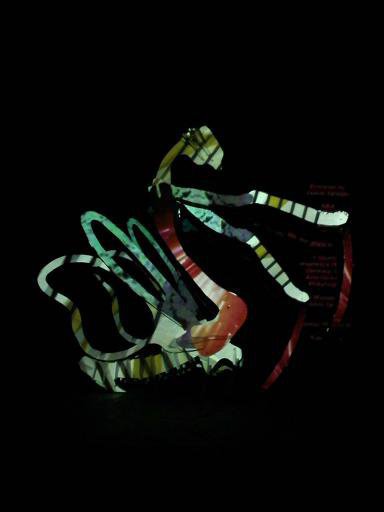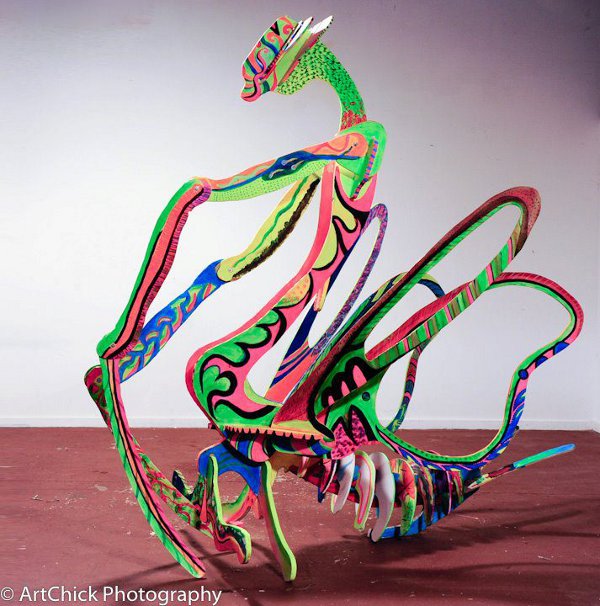
Artists gather to co-create at The Mantis Garden
In West Philadelphia, a group of artists has come together in order to reshape the mythology of one of humanity’s most beloved insects: the praying mantis. The Mantis Garden is an ongoing, community project in which majestic, wooden mantises are constructed for an installation and then painted in a collective, therapeutic way. Gaetan Spurgin is the founder and initial artist. He is now joined by Clinton Graybill, who has an interest in social work and art therapy, and Skye Ruozzi, who studies architecture.
Originally, the lithe form of the first mantis was intended to be a surface for digital projections during concerts. At a Thanksgiving gathering where the mantis was on display, a daughter of Spurgin’s friend asked if she could paint part of the creature. From there, the idea that the bare wooden exterior could be transformed in ways other than projection took hold.
Spurgin moved the newly conceptualized mantis to the Painted Bride Art Center for a December 2011 residency, where more than 100 participants helped to paint it. The sense of participation and community that emerged from this residency drove the project to expand further.
Currently, the collective is in the process of building and transporting a full group of mantises to a number of events along the east coast. These festivals and gatherings will all join in contributing to the painting until the entire Mantis Garden– five sculptures around a centrally located, egg-shaped audio installation – is ultimately transported to Black Rock Desert for this year’s Burning Man.
Ultimately, the project is about the therapeutic qualities of art-making. For Graybill, art has always provided a way to feel safe and comfortable, and he hopes that this traveling installation will provide the same opportunity to others. Spurgin partly approaches the MantisGarden in memory his late father, Gary Lee Spurgin, who had become a big supporter of the arts toward the end of his life. The cooperative process is a way to share these goals and allow others the chance to be part of something larger than themselves.
The future of the Mantis Garden is open-ended since it is a very organic sort of project, but the group hopes to continue creating these sculptures for art therapy in hospitals or graffiti abatement programs. Throughout history, the mantis has been viewed as a friend of humans, eating pests and providing good luck in a number of mythologies. Like the mantis, life is what we make of it. The sense of purpose and belonging provided by art is what will save us all in the end.
Recent Content
-
Artsarticle ·
-
Artsarticle ·
-
Artsarticle ·


